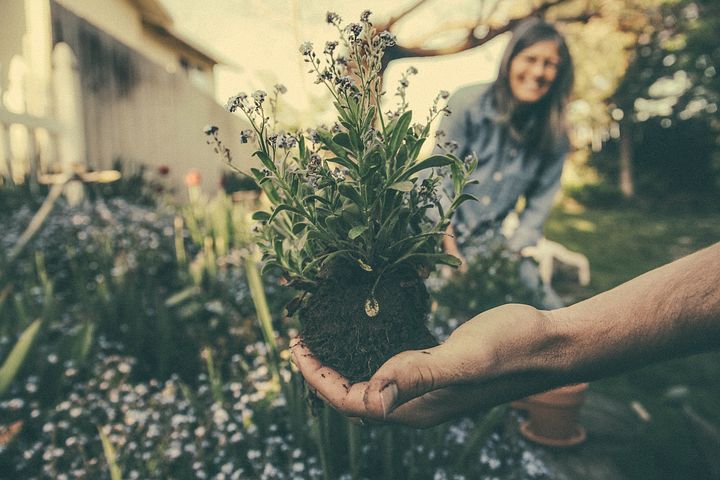Whenever you enjoy honey dipped popcorn during a movie night, or you go out to purchase beeswax candles, you may not immediately think about the importance of bees. Bees have much more value than what they directly produce. In fact,these insects play an important role in the local food chain. From pollinating food crops to increase the yield of strawberries, honeybees dictate the success of many different industries in Southern California and across the world.

However, the local bee population has been drastically affected. Just between 2014 and 2015, 42% of colonies from that year died. Some areas have also reported honeybee losses of 75% or more. What is happening is that the bees simply leave their hive and don’t come back, making it even more challenging for scientists to figure out what’s wrong.
As research aims at getting to the bottom of the problem, you can play an important role in helping your local bees.
Keep your landscape natural
Many homeowners strive for the perfect lawn; a lawn that is evergreen, free of weeds, and has colorful flowers. This has led to people replacing natural landscapes with many exotic (or modified) breeds that don’t favor the local bee population. For example, homeowners who no longer plant dandelions, trees, and clovers are unknowingly limiting the food supply of local bees. In addition,genetic changes are limiting the effectiveness of pollination- by reducing nectar content.

You can create a more welcoming environment for local bees by keeping your landscape as natural as possible. Limit your use of pesticides and plant species such as Clovers, Lavender, Dragon head, and Yarrow plants (among others).
Create habitats for local bees
Many people mistakenly think that all bees live in hives. However, many species of bees are solitary or colony bees that live within the natural habitat. They turn dead trees, hollow branches, and abandoned barrows into their homes.
You can help the local bee population by not only leaving natural habitat areas unperturbed but by also creating more areas for the bees to thrive. For example, placing bee blocks around your property can create extra space for bees to form colonies.
Keep the flowers blooming
Flowers lead to pollen, and pollen leads to bees. By keeping the flowers blooming in your yard, bees will have plenty of nectar to suckle on during warm months.Take care of all the flowers, plants, and trees that bees love so they can bloom at the correct time.

You can also visit your local greenhouse to receive advice on which crops are best to plant, and how they can attract bees. You often need to consider sun exposure, soil nutrients, and any other species-specific accommodations that your plants may need.
In addition to the bee-friendly plants already mentioned, you should also consider planting Sunflowers, crocus, Asters, and Horse mint flowers.
Master the art of bolting
Many bee species try to survive through the winter as they wait for warmer temperatures. You can help your local bees survive through cold weather by letting your vegetables bolt.
During bolting, veggies seed until after the harvesting period. These seeds allow bees to stock up for winter- instead of the colony dying out. And with the reducing bee populations, keeping colonies alive all year round can help increase their numbers over time.
Leave some open space in your yard
If you’re a fan of covering every piece of open ground with mulch, try to cut back for the sake of your local bees. Leave some bare sections of earth in your yard to allow bees to dig their nests. Not all bees live in hives, and many species dig underground nests so they can raise their offspring. These open sections of earth can serve as the perfect bee habitat.
Keep the queen safe
If you already have an existing colony nearby, you can take steps to keep the queen safe throughout the year. Remember that queens are responsible for producing eggs and growing the colony over time.
To protect the queen, make sure there are enough blooming flowers, trees,and shrubs in close proximity. This will make it easier for the colony to find food and keep the queen healthy. Bolting your veggies can also help the colony stock up for winter.
Another step you can take is to protect the colony from invaders. Watch out for any bluejackets (or other foreign species) that may attack the queen and her guards.
Don’t forget the hardworking beekeepers in Southern California

When looking for honey, strive to buy it locally. Supporting small beekeepers is the best way of increasing the number of local colonies. Furthermore, local honey is often natural and healthier than processed honey and can help those suffering from allergies. Attend your near by flea markets and farmer’s events to find more local honey in California.





Leave a Comment